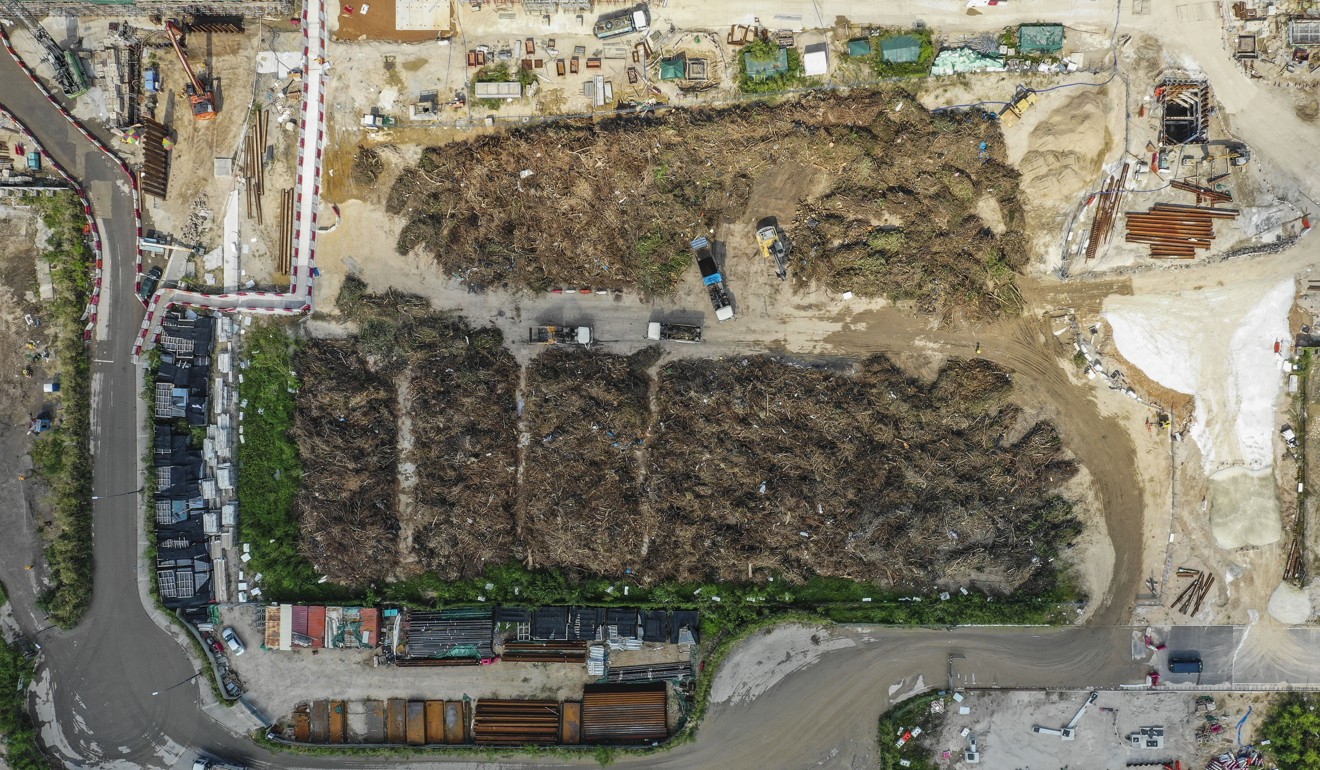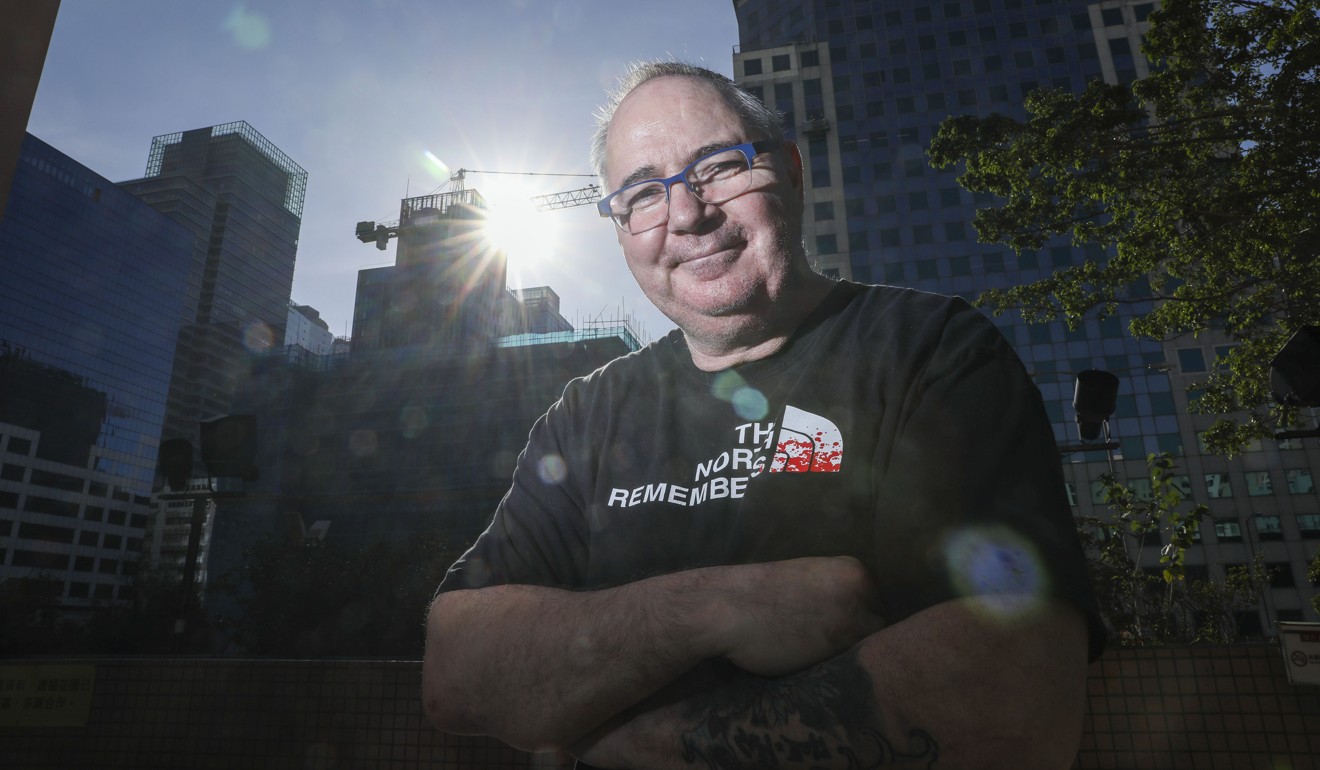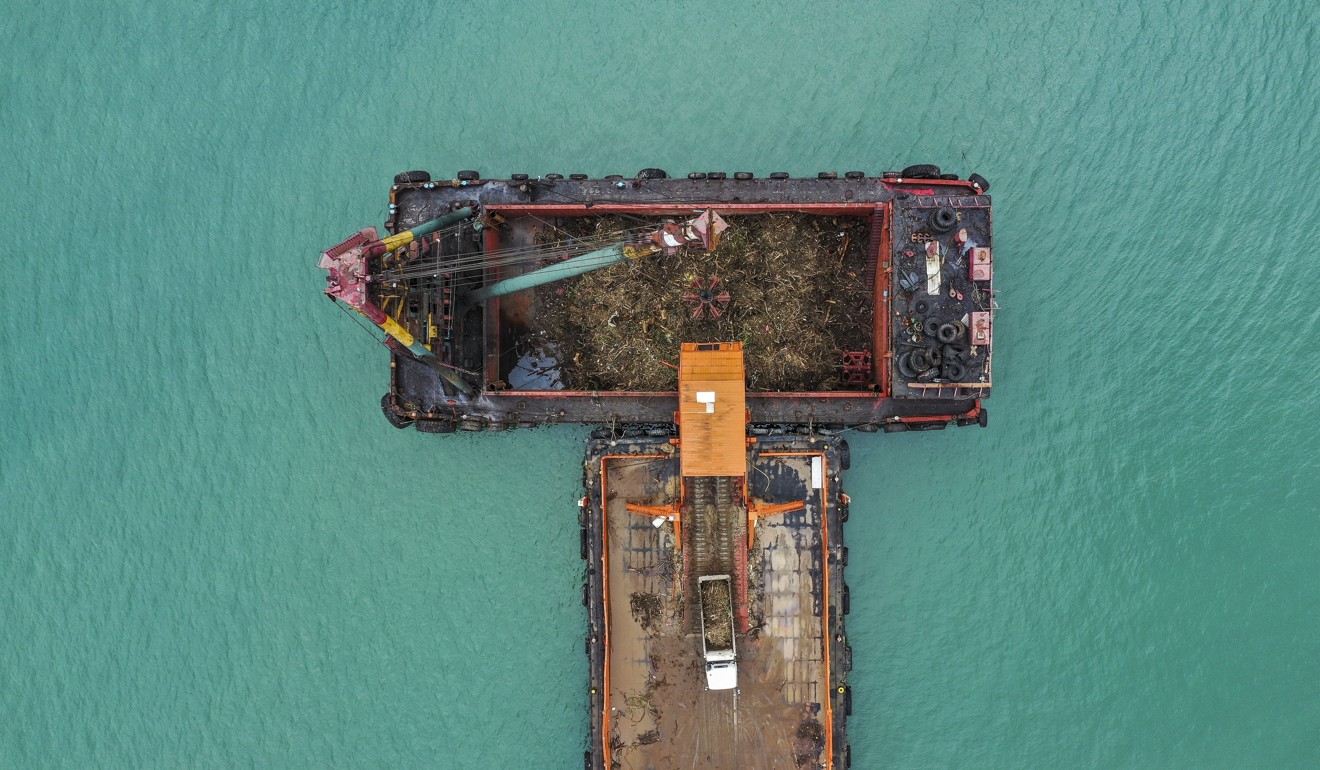
Thousands of truckloads of Typhoon Mangkhut tree waste to be evicted from old Hong Kong airport site, but where can it go?
- Land used as storage is earmarked for development
- Recycler urges officials to break down the trees in a wood chipper and turn them into biomass fuel
Trees felled by Typhoon Mangkhut and stored on the site of Hong Kong’s former airport at Kai Tak will soon have to be moved as the land has been earmarked for development.
The city’s Environmental Protection Department (EPD) said a new arrangement for the debris would be announced next week.
According to the Lands Department, two of four sites lent to the Civil Engineering and Development Department for temporary storage of the trees have already been returned in line with a deadline of October 30. However, the loan of the remaining two was extended for another month.
“The four sites are proposed land sales sites scheduled for disposal in the second half of the 2018/19 financial year,” a spokeswoman for the Lands Department said.
The spaces have been marked for new housing.

Environment officials said the area must be cleared soon to reduce the risk of fires and pest problems.
But the EPD did not say where the trees would go, citing its announcement to be made next week.
The old airport runways have been covered with 7,400 truckloads of tree waste since Typhoon Mangkhut hit on September 16. The sites have been receiving about 100 truckloads a day.
Some 13,400 tonnes have been sent to the West New Territories Landfill by lorry or barge since September 28.
7,000 tonnes of trees felled by Typhoon Mangkhut have ended up in Hong Kong landfill, government admits
Jan Thomsen, a wood recycler and biomass trader, said he felt frustrated at hearing such a large amount of tree waste had ended up in the ground.
He has been lobbying environment officials since early October to get the tree trunks in a chipper at Kai Tak and ship the waste to power plants in partnerships with biomass trading companies.

“This tree waste can be turned into biomass to provide energy,” Thomsen said.
“It’s such a waste sending it to landfill.”
Rotting trees would release methane about 25 times more potent than carbon dioxide, which would contribute to global warming, he added.
No more than eight weeks would be required to ship the necessary equipment to Hong Kong to shred 14 tonnes of branches per hour, 18 to 20 hours per day.
Hong Kong’s trees are at risk – more from people who don’t want them in urban areas than from typhoons
But Thomsen’s proposal did not get a reply from the EPD for almost three weeks. He eventually received an email last Sunday morning, one day after the Post published a story on the idea.
Dr Keith Lai Chun-kit, acting senior environment protection officer, said Thomsen was welcome to take away by his own means as much tree waste as he wanted, free of charge. But Lai turned down the proposal to bring in a wood chipper because the Kai Tak site needed to be cleared as soon as practicable.

The department said it would make necessary arrangements to facilitate Thomsen collecting tree waste. But Lai later told the Post the EPD would not cover transport or labour costs as Thomsen’s proposal involved a profit motive.
Thomsen replied: “Your suggestion to drive the tree waste to a plot where we can chip it and then drive it back to the harbour for export is a waste of energy. If the wood can be chipped on site and then exported by ship from Kai Tak, that is the most economical and environmentally efficient way.”
Thomsen suggested he could use more powerful chipping equipment to speed up the process.
But his proposal was rejected again on October 29 with the same reasons.
Typhoon Mangkhut tree debris shouldn’t be sent to Hong Kong’s already overflowing landfills
“If they had replied to me earlier, I could have provided more solutions to fix these problems,” Thomsen said.
“The EPD should have worked with business professionals to deal with the tree waste.”
The department said it would not rule out exploring the possibility of using the waste as alternative fuel. Some would be used as compost at the government’s Animal Waste Composting Plant, and as a bulking agent in recycling at its Organic Resources Recovery Centre Phase 1. But the EPD did not specify the amounts involved.
The public have also been doing their bit to deal with the trees. Some 85 Hongkongers have taken 435 pieces of wood, and 261 pieces have been transferred to government Community Green Stations to be used again.
